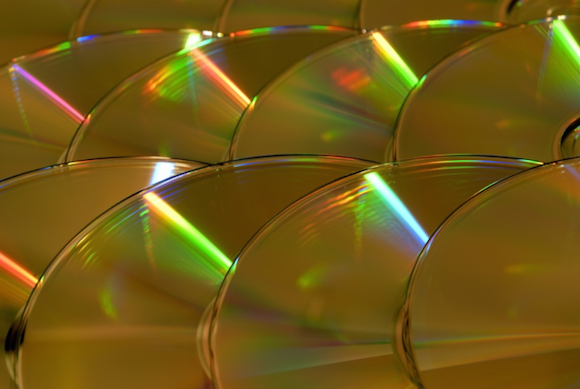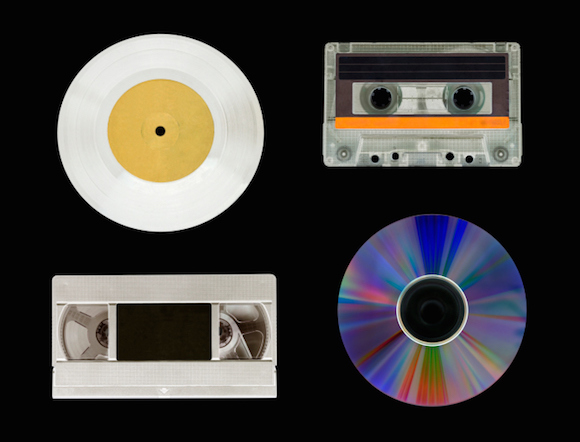From records to cassette tapes, VHS cassettes, CDs and laserdiscs, the history of media is rich with a variety of forms used to produce music and videos.
And some of those early forms are actually increasing in popularity. In 2015, nearly 12 million vinyl albums were sold, according to a Nielsen report released in January 2016. Last year marked the 10th straight year of vinyl sales growth, noted the report.
While having a collection of one or more of these types of media can provide entertainment (and a cool attraction to show friends), taking proper care of the contents is a key way to help them last for years to come.
Follow these guidelines to store collections of dead media in the best way possible.
Pay Attention to Temperature.
Extreme highs – or lows – can greatly affect most forms of media.
“Store all media in a climate controlled area to prevent melting, warping or other damage,” said Nancy Haworth, professional organizer and owner of On Task Organizing, LLC, in Raleigh, NC. “Do not store these items in a garage, basement or attic unless it is climate controlled.”
Stay Away UV Light and Moisture.
“Keep media in low humidity and no sunlight,” said Andre Hinds, an experienced audio and video editor based in Lynn, MA.
If these conditions aren’t provided, the image or sound quality can diminish. Laser discs, for instance, can get laser rot, which occurs when the aluminum layer of the disc begins to oxidize. Laser rot then results in many colored lines or dots appearing on the screen as the disc is played.
Find a Solid Case.
“For VHS tapes and CDs, bookcases, multimedia storage towers, slim media shelves or media boxes work well for storage,” said Haworth.
A few to try: a tall bookcase for a large collection, a slim shelving unit for a narrow space, or a container designed to hold CDs, VHS cassettes, or both.
A tower with many open shelves can be used to display a collection; if you’d rather hide the items or keep them safe, a cabinet with doors and a lock might be useful.
Some options for a record collection include a cabinet or shelving unit with specific space for albums, a tall storage unit that can easily fit in a corner, or a box designed to carry and move a smaller collection as needed.
If you can’t find what you need online or in a department store, try scouting places that focus on the past.
“Search thrift shops for vintage media storage boxes, drawers and bags,” said Haworth.
Focus on Organization.
“The most common way to arrange media collections is alphabetically,” said Haworth.
If you have a large collection you want to organize by the alphabet, consider a two-step process, advised Thea Morris, founder of Time with Thea, an organizational and inspirational blog.
“To start off with, I separate the items into two piles by alphabetical order,” said Morris.
Everything that starts with A to M goes in one pile and everything that starts with N to Z goes in another pile.
“After that I go through the first pile and separate the items for each letter of the alphabet,” said Morris. “It is a lot easier to work with 13 piles than 26 piles and in the long run is more time efficient.”
Other strategies for optimal arrangements include organizing by genre or date.
Position Correctly.
“The media itself is stored best if it is kept the same way it is sold – upright,” said Hinds.
For records, store them like books, with only the narrow spine of the cover showing. If you have a mix of dark covers and light ones, try putting a separator such as parchment paper to keep the colors from rubbing off on other albums.
Provide Extra Protection.
When storing records, Miguel Ferreira, founder of That Special Record, stresses the use of inner sleeves.
And keep your records away from dust as much as possible, added Ferreira. Use a micro fiber cloth before and after playing the record. You might also check at a music store for a record cleaning machine. Some places with these machines will clean your records for a low charge.
With cassette tapes, it’s often best to let a tape run to the end, and only rewind it when you are ready to play it again, said Hinds.
Purge.
“When sorting it is also important to have a ‘purge’ or ‘get rid of’ pile,” said Morris.
If the CD or tape has been damaged, check to see if it can be recycled. And if it works but no longer fits your tastes, donate it to someone else.
“It is a lot easier to organize something that has been decluttered,” said Morris.






